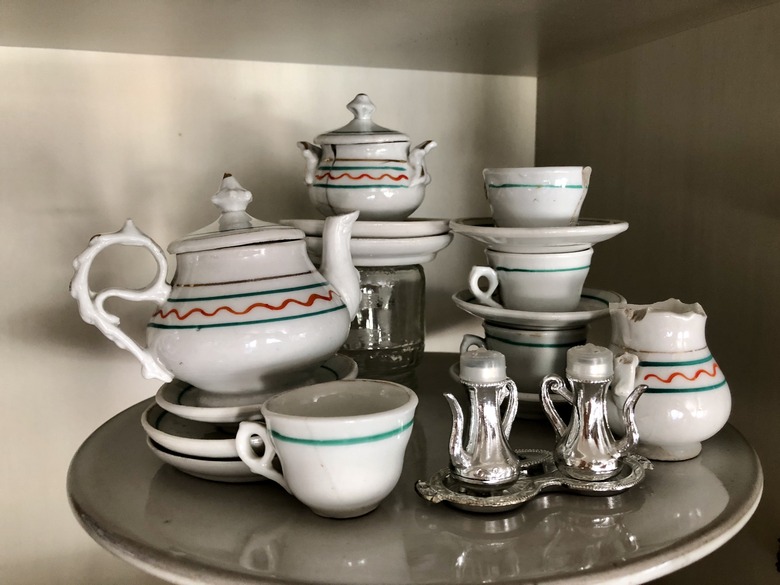- Author:
- Gail
- Subject:
- Elementary English Language Arts, History, Social Studies
- Material Type:
- Lesson Plan
- Level:
- Upper Elementary
- Tags:
- License:
- Creative Commons Attribution Non-Commercial
- Language:
- English
- Media Formats:
- Text/HTML
Education Standards
Basketball Story by Emery Blackwell
Beginner's Guide to iMovie
Rubric-- History: Telling a Story with an Object
History: Telling a Story through an Object

Overview
Everyone has a story to share. Students tell a story by using a personal object that means something to them and/or their family.
Not only does this lesson allow students to get to know each other better, it also is an introduction to teaching history/social studies. History is all about people and their stories.
Summary
Students will use a video editing software to create a story using an object that is significant to them and/or their family.
This lesson is meant to be an introduction to teaching history/social studies, helping students to understand that history is all about people and their stories.
- 2 weeks 60 minutes each day (allowing enough time for each student to share their presentation)
- face-to-face (can be adapted to be virtual if needed)
Background for Teachers
- To teach this lesson, you will need an understanding of different video editing software. You will also need to know how you want students to share their presentations,
Step 1 - Goals and Outcomes
Ties to standards:
Speaking and Listening Standard 4
Report on a topic or text, tell a story, or recount an experience in an organized manner, using appropriate facts and relevant, descriptive details to support main ideas or themes; speak clearly at an understandable pace.
Speaking and Listening Standard 5
Add audio recordings and visual displays to presentations when appropriate to enhance the development of main ideas or themes.
Learning Intentions:
- Students will be able to tell a story in an organized manner using an object that is significant to him/her or a family member.
Success Criteria:
- Students will create a video that combines audio and pictures to tell a personal story or a story from a family member using an object to jog a memory.
Step 2 - Planning Instruction
Student Background Knowledge
- Prior to this lesson, students will need to have an understanding of how to use Adobe Spark, iMovie and/or Adobe Premiere.
- Students should know how to structure, organize, and tell a story.
Strategies for Diverse Learners
Accommodations can be made depending on the needs of the students. Options may include:
*Students can make a presentation using Microsoft Power Point using pictures and text.
*Students can present their story in front of the class with only their object.
*Rubric can be adjusted to fit the needs of the student.
Step 3 - Instruction
Begin by showing a teacher and/or student video story where a story is told using an object that is significant to the person and/or their family.
Another example that can be shown is Emery's basketball story. Emery shows a basketball, soccer ball, football, and a baseball and tells why they are important to him. Point out to the students how Emery used pictures, video, and audio to tell his story.
Let them know they are also going to create a video about an object that means something to them. To begin with model brainstorming by listing items that are significant to you. Have a few of them share an item of theirs they can think of. Then have them list items that are significant to them in their writing notebook. Give them 5 minutes to brainstorm and 3 minutes to share their list with a partner. Have them choose 1 items to write about. Model with them how to set up their paper in their writing notebook. Write about an object of yours. (If students are having a hard time coming up with an object to write about you might want to allow them another day so they can talk to parents. Parents might be able to help them come up with an object.)
Object:
Why my object means something to me and/or my family:
Story or memory associated with object:
Have students share story with a partner, class, and/or teacher. Students can give each other objective feedback. Give students time to make changes to their story. Have students time each other. Students should have at least a minute, perferably 2-3. If their story is shorter than a minute have them add to it. Have students practice telling their story without reading it. Once they are ready have students video each other telling their story.
Have student gather pictures and videos enhance their story.
Allow students time to compile and create a video telling their story.
Have students present their story to the class.
Once all students have presented their story talk to students explaining that everyone has a story to share. Let them know that history is all about people and their stories. Let them know that this year we will be learning about some of these people and their stories.
Step 4 - Assessments
Formative assessment will be made all along the way by peers and teacher.
Summative assessment will be made using rubric after student has presented video to the class.